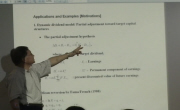본 연구는 현대 소비자들이 물질적 소비에서 체험적 소비로 전환하는 것에 대한 생각에서 시작되었다. 소비자의 사용자 경험(User Experience)은 만족도, 충성도, 구전 등에 큰 영향을 미치고, 더...
http://chineseinput.net/에서 pinyin(병음)방식으로 중국어를 변환할 수 있습니다.
변환된 중국어를 복사하여 사용하시면 됩니다.
- 中文 을 입력하시려면 zhongwen을 입력하시고 space를누르시면됩니다.
- 北京 을 입력하시려면 beijing을 입력하시고 space를 누르시면 됩니다.

제품 및 서비스의 사용자 경험 평가 요소에 관한 실증적 비교 연구 = An Empirical Comparative Study on the Evaluation Factors of User Experience of Products and Services
한글로보기https://www.riss.kr/link?id=A109114946
- 저자
- 발행기관
- 학술지명
- 권호사항
-
발행연도
2024
-
작성언어
Korean
- 주제어
-
등재정보
KCI등재
-
자료형태
학술저널
-
수록면
355-373(19쪽)
- 제공처
-
0
상세조회 -
0
다운로드
부가정보
국문 초록 (Abstract)
본 연구는 현대 소비자들이 물질적 소비에서 체험적 소비로 전환하는 것에 대한 생각에서 시작되었다. 소비자의 사용자 경험(User Experience)은 만족도, 충성도, 구전 등에 큰 영향을 미치고, 더 나아가 기업의- 358 - 흥망성쇠에도 영향을 미친다. 우리는 제품과 서비스의사용자 경험 과정이 다르다는 것을 쉽게 구별할 수 있지만, 정량적 방식으로 둘을 연구한 경우는 거의 없으며, 소수의 연구에서도 연구자들이 선택한 실증 비교 대상이매우 임의적이다. 따라서 본 연구의 목적은 제품과 서비스의 사용자 경험 평가 요소의 구성을 정성적이고 정량적인 방법을 종합적으로 활용하여 연구하는 것이다.
본 논문은 우선 제품과 서비스의 각 방면의 차이를정성적으로 토론하고, 제품과 서비스가 사용자 경험의평가 요소의 중요성 인식에 차이가 있다는 가설을 제시한다. 그 후 PSS 개념이 도입되어 제품과 서비스간의 비교가 가능하다는 것을 정성적으로 논증한다. 다음으로 정량적인 설문조사를 통해 제품과 서비스를각각 대표할 수 있는 실증적 자극물을 과학적으로 추출하여 향후 관련 연구자들에게 방법적 참고를 제공한다. 그 후 이론적 고찰과 해석적 뿌리 이론을 통해18개의 사용자 경험 요인을 정성적으로 추출하여 실증적 연구를 진행한다. 6그룹의 자극물에 대해 각각정량적인 차이 분석과 탐색적 요인분석(EFA)을 진행하여 묘사적 통계 결과와 결합하여 제품과 서비스의사용자 경험 요소의 차이점을 설명한다.
연구결과 및 내용은 다음과 같다. 첫째, 선정된 세그룹의 제품과 서비스 비교 실증 연구에서, 완전히 차이가 없는 경험 요소는 존재하지 않았으므로 가설이 지지되며, 즉 제품과 서비스의 사용자 경험 평가 요소의 중요성 인식에 차이가 존재합니다. 둘째, 환경, 편안함, 전문성, 기능성, 검색성 이 몇 가지 요소들은 세 개의 대비 그룹에서 공통적인 차이를 보였다. 세째, EFA 분석을 통해 검색성, 의존성, 성취감 등 3개의 부적절한 요소를 제거한 후, 제품 사용자 경험 요소는 향락 차원, 실용 차원, 체험 차원, 대화식 차원으로 집약되었고, 서비스 사용자 경험 요소는 감정 차원, 기술 전문성 차원, 도구성 차원, 유형 차원으로 집약되었다. 그 중 기능성요소는 제품 사용자 경험에 고유한 요소이며, 환경과 전문성은 서비스 사용자 경험에 고유한 요소입니다.
본 연구는 향후 연구를 위한 선행적 기초 연구이다. 이러한 연구결과를 바탕으로 후속 연구는 제품-서비스를 비교그룹으로 하고, 사용자 경험을 인수변수로하여 소비자의 각도에서 참여도, 위험 인식, 재구매의지 등 방면의 차이점을 더욱 기대한다.
다국어 초록 (Multilingual Abstract)
This study originated from the observation that modern consumers are shifting from material consumption to experiential consumption. The User Experience (UX) significantly impacts consumer satisfaction, loyalty, and word-of-mouth, which in turn influe...
This study originated from the observation that modern consumers are shifting from material consumption to experiential consumption. The User Experience (UX) significantly impacts consumer satisfaction, loyalty, and word-of-mouth, which in turn influences the success or failure of companies.
Although it's easy to distinguish between the UX processes of products and services, few studies have quantitatively investigated both, and in those few, the empirical comparison subjects chosen by researchers are often arbitrary. Therefore, this study aims to comprehensively investigate the components of UX evaluation factors for products and services using both qualitative and quantitative methods.
First, this paper qualitatively discusses the differences in various aspects of products and services and proposes the hypothesis that there is a difference in the perceived importance of UX evaluation factors between products and services.
The PSS (Product-Service System) concept is then introduced to qualitatively demonstrate that comparing products and services is feasible.
Subsequently, a quantitative survey is conducted to scientifically extract empirical stimuli representative of products and services, providing methodological references for future researchers. Following this, 18 UX factors are qualitatively extracted through theoretical review and interpretative grounded theory, leading to empirical research. Quantitative difference analysis and exploratory factor analysis (EFA) are performed on six groups of stimuli, explaining the differences in UX factors between products and services by combining descriptive statistical results.
The research findings are as follows. First, in the empirical comparison study of the three selected groups of products and services, no experience factors were completely identical, supporting the hypothesis that there are differences in the perceived importance of UX evaluation factors between products and services. Second, factors such as environment, comfort, expertise, functionality, and searchability showed common differences across the three comparison groups. Third, after removing three inappropriate factors—searchability, reliability, and sense of achievement—through EFA analysis, product UX factors were condensed into the dimensions of hedonism, practicality, experience, and interactivity, while service UX factors were condensed into the dimensions of emotion, technical expertise, instrumentality, and tangibility. Among these, functionality was a unique factor for product UX, while environment and expertise were unique factors for service UX.
This study serves as a foundational reference for future research. Based on these findings, subsequent research is expected to further investigate differences in aspects such as consumer engagement, risk perception, and repurchase intention, using products and services as comparison groups and UX as a variable.
동일학술지(권/호) 다른 논문
-
유니버설 디자인 개념을 적용한 시니어 소비자 특화 패션 브랜드 개발에 관한 융합전략 연구
- 한국전시산업융합연구원
- 김문영
- 2024
- KCI등재
-
유아교육기관 교사와 부모의 의사소통 증진을 위한 스마트 알림장 디자인 방향 연구
- 한국전시산업융합연구원
- 김민지
- 2024
- KCI등재
-
사회적 교류 증진을 위한 노인복지관의 설계 지침 - 융합적 접근 2. 활동 프로그램 및 공간 현황 조사를 중심으로 -
- 한국전시산업융합연구원
- 이유나
- 2024
- KCI등재
-
- 한국전시산업융합연구원
- 조일레
- 2024
- KCI등재




 DBpia
DBpia






